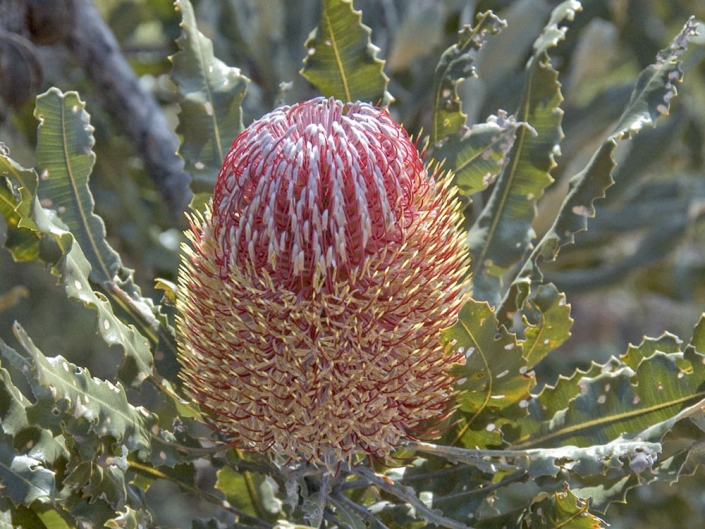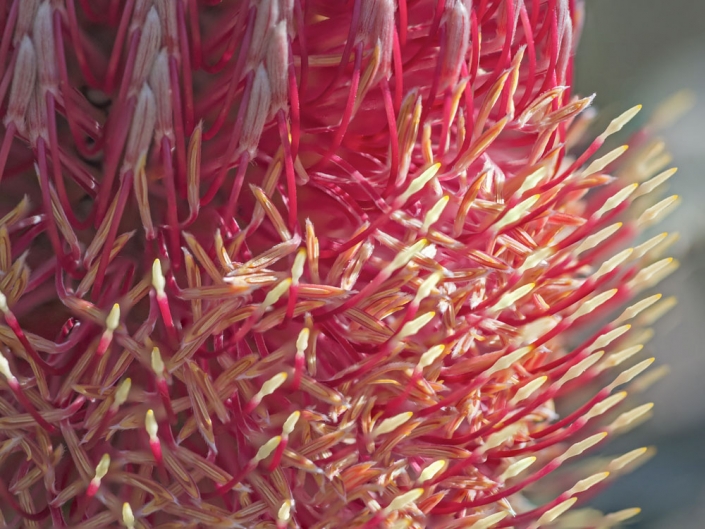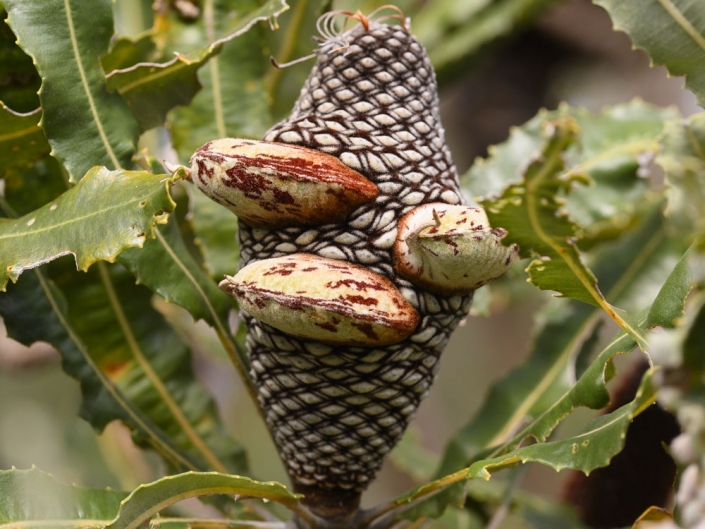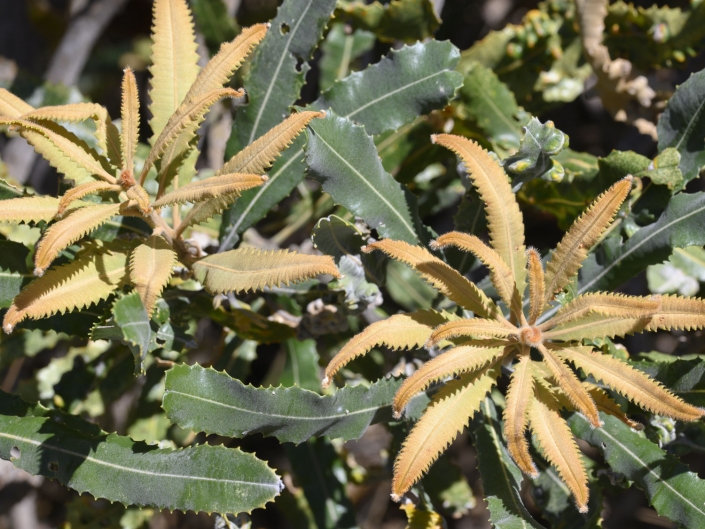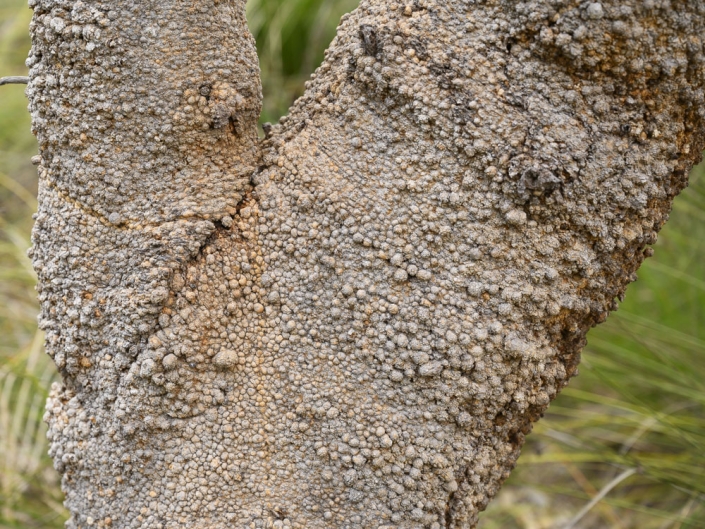Point of Interest 7: Orchids Sign
This area has banksia woodland over shrubs and herbs close to a large dead banksia and healthy Menzies Banksias. This spot is close to the interpretive sign featuring Red Beak and Blue Sun Orchids. It is a good place to see Dwarf Wedding Bush flowering in spring, as well as Running Postman and Marno in winter.
Common Wildflowers
Autumn – Pearl Flower (Conostephium pendulum)
Winter – Grevillea vestita, Yellow Buttercups (Hibbertia hypericoides), Daviesia nudiflora
Spring – Dwarf Wedding Bush (Ricinocarpos undulatus), Cats Paws, Marno, Yellow Buttercups, sundews, Running Postman
Late Spring & Summer – Pixie Mops (Petrophile macrostachya), Pom Poms (Ptilotus manglesii), Fragrant Waitzia (Waitzia suaveolens)
Focus Topic 15. Menzies Banksia
The Menzies or firewood banksia (Banksia menziesii) produces impressive red and yellow flower spikes in winter, providing an important food source for insects and birds at that time. Each spike contains hundreds of tiny red flowers with yellow stigmas, which are primarily insect pollinated but also attract birds. Carnaby’s Black Cockatoos (Calyptorhynchus latirostris) feed on the seeds and nectar and seek out grubs in the flowers (Focus Topic 10). Relatively large and complex galls are common on banksia trees and are formed by very small insects that have not yet been identified.
The nectar of banksia flowers was also used in a drink by the local aboriginal people (the Whadjuk Noongar). Along with beverages from other flowers, such as grevillea, it was drunk at special sweet water festivals.









